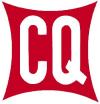ARRL Simulated Emergency Test Instruction Sheet - October 03, 2020
The nationwide ARRL Simulated Emergency Test occurs the first Saturday of October every year.
This year Hawaii ARES is simulating deployment of EmComm stations to shelters statewide
providing reports to American Red Cross shelter managers directly to the Red Cross email system.
The purpose of this COMMUNICATIONS EXERCISE is to verify our ability to deploy equipment to
shelters and operate using the digital protocols developed in conjunction with Hawaii State
Red Cross.
- Who: Participation is open to all amateur radio operators supporting their ARRL
ARES District.
- When: From 9:00 a.m. to 12 noon HST, Saturday, October 3, 2020.
- Where: Working from designated private shelters (if available). Because of the COVID-19
situation, and concern for the safety of the radio operators, radio operators uncomfortable
with shelter deployment should consider operating from their homes.
At approximately 8:00 a.m. or earlier, amateur radio operators setup their equipment at
designated private shelters or from their homes. Radio operators are requested to use
emergency power, e.g. batteries, solar panels, generators, if available. Otherwise operate
from commercial power.
If working from home, please try to operate from outside your ham shack, i.e., in your back
Yard or close by park to simulate deployment to a shelter.
Each radio station will transmit two Winlink messages using Winlink forms.
For shelter manager and shelter names, use actual names if available otherwise please make them
up for use in the messages sent.
Use whatever Winlink mode to send your messages, e.g. Telnet, VARA FM, ARDOP, VARA HF, Pactor,
Packet. Voice and Fldigi will also be permitted but the messages eventually need to be sent to
ARC and CC radio operators KH7HO and KH6FHI using their Winlink email address.
Each ARES District Emergency Coordinator (DEC) and participating groups will organize
their operation in the exercise.
Message Addressing:
Honolulu and Kauai county simulated shelter operators will send messages:
To: Paul Klink, ARC Sheltering Lead; email: paul.klink@redcross.org
cc: KH7HO
Maui and Hawaii county simulated shelter operators will send messages:
To: Paul Klink, ARC Sheltering Lead; email: paul.klink@redcross.org
cc: KH6FHI
First Message Completed Sample
Second Message Completed Sample
|


















